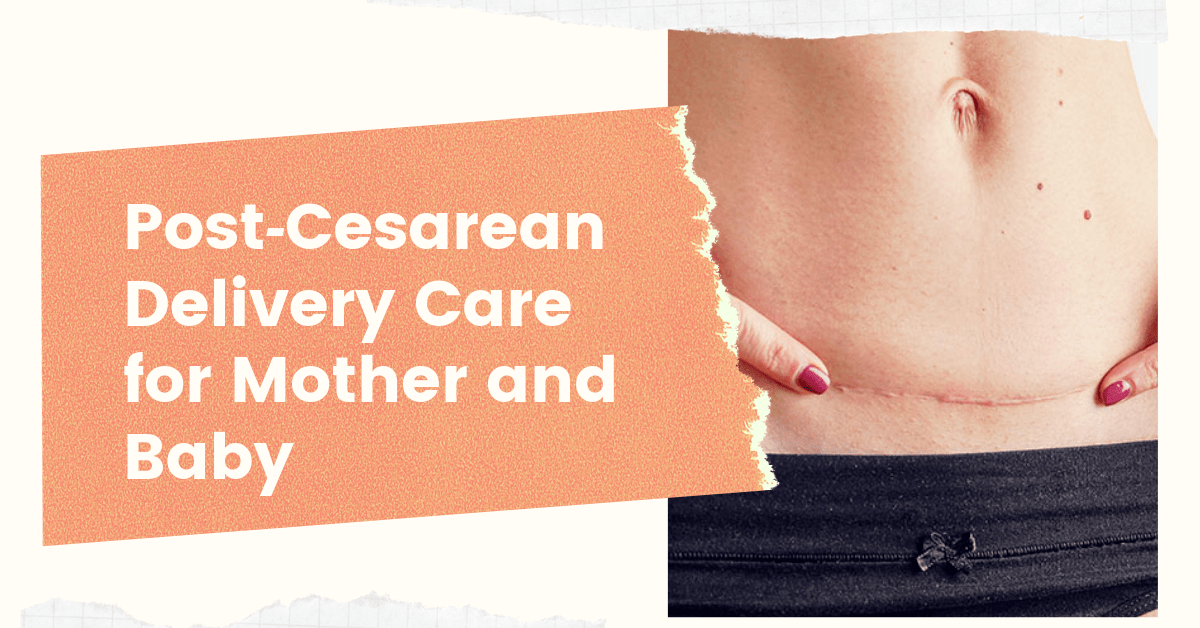
Baby Care After Cesarean Delivery: A Comprehensive Guide
Introduction
A cesarean delivery, also known as a C-section, is a surgical procedure in which a baby is delivered through an incision in the mother’s abdomen and uterus. While a C-section is a major surgery, it is often necessary to ensure the safety of both the mother and the baby. After a cesarean delivery, there are specific care considerations for both the mother and the newborn. This article provides a comprehensive guide to baby care after a cesarean delivery, covering essential aspects such as feeding, bathing, diaper changing, and monitoring the baby’s well-being.
Feeding the Baby
- Breastfeeding: Breastfeeding is recommended for all babies, including those born via cesarean delivery. However, it may take a few days for the mother’s milk to come in after a C-section. In the meantime, the baby can be given formula or pumped breast milk.
- Bottle-feeding: If the mother is unable to breastfeed, the baby can be bottle-fed with formula or pumped breast milk. It is important to use a bottle with a slow-flow nipple to prevent the baby from choking.
- Burping the Baby: After each feeding, it is important to burp the baby to release any trapped air. This can be done by holding the baby upright and gently patting or rubbing their back.
Bathing the Baby
- Sponge Baths: For the first few days after a cesarean delivery, it is recommended to give the baby sponge baths instead of full baths. This is because the incision site needs to be kept clean and dry.
- Full Baths: Once the incision site has healed, the baby can be given full baths. Use lukewarm water and a mild, fragrance-free soap. Avoid using harsh soaps or detergents that can irritate the baby’s skin.
- Drying the Baby: After bathing, gently pat the baby dry with a soft towel. Avoid rubbing the baby’s skin, as this can cause irritation.
Diaper Changing
- Frequency: Newborns need to be changed frequently, especially in the first few days after birth. Change the baby’s diaper as soon as it becomes wet or soiled.
- Cleaning the Diaper Area: Use warm water and a soft washcloth to gently clean the baby’s diaper area. Avoid using harsh wipes or soaps that can irritate the baby’s skin.
- Applying Diaper Cream: After cleaning the diaper area, apply a thin layer of diaper cream to prevent diaper rash.
Monitoring the Baby’s Well-being
- Jaundice: Jaundice is a common condition in newborns that causes yellowing of the skin and whites of the eyes. It is caused by a buildup of bilirubin, a yellow pigment that is produced when red blood cells break down. Jaundice usually resolves on its own within a few weeks. However, if the baby’s jaundice is severe or does not improve, it may require treatment.
- Feeding Cues: Pay attention to the baby’s feeding cues, such as rooting, sucking, and crying. Feed the baby when they show signs of hunger.
- Wet and Dirty Diapers: Keep track of the number of wet and dirty diapers the baby produces each day. This can help you monitor the baby’s hydration and overall well-being.
- Temperature: Take the baby’s temperature regularly, especially if they seem fussy or uncomfortable. A fever can be a sign of infection.
- Weight Gain: Weigh the baby regularly to track their growth and development.
Other Considerations
- Bonding with the Baby: After a cesarean delivery, it is important to spend time bonding with the baby. This can be done through skin-to-skin contact, cuddling, and talking to the baby.
- Recovery from Surgery: The mother will need time to recover from the surgery. It is important to rest and avoid strenuous activity.
- Pain Management: The mother may experience pain after the surgery. Pain medication can be prescribed to help manage the pain.
- Follow-up Appointments: The mother and baby will need to attend follow-up appointments with their healthcare providers to monitor their recovery and the baby’s growth and development.
Conclusion
Baby care after a cesarean delivery requires special attention and care. By following the guidelines outlined in this article, parents can ensure the well-being and proper development of their newborn. It is important to remember that every baby is different, and parents should consult with their healthcare providers for personalized advice and support. With proper care and monitoring, both the mother and the baby can recover and thrive after a cesarean delivery.
